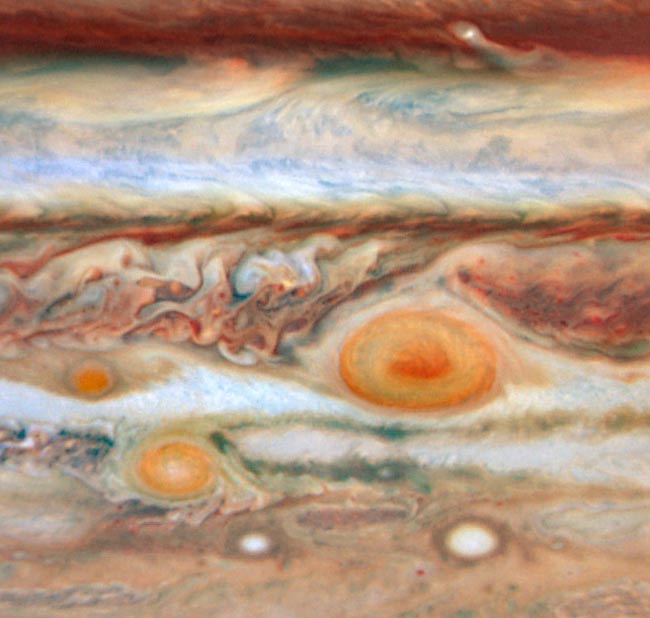Jupiter Breaks Out in Spots

A third redspot has appeared on Jupiter in what astronomers called a case of the planetarymeasles.
Astronomersspotted the new storm — a distant smaller cousin of the GreatRed Spot and Little Red Spot — using the Hubble Space Telescope and W.M.Keck telescope to get both visible-light and near-infrared images.
Turbulent stormsare common in Jupiter?s atmosphere, although the red color in the biggeststorms remains a mystery. The new red spot, announced yesterday, was previouslya white, oval-shaped storm.
One theorysuggests such storms have enough power and size to dredge material from deepbeneath Jupiter?s clouds and lift it to higher altitudes, exposing it to solarultraviolet radiation that changes the color to the now-familiar red.
Earlytelescope observations indicate that the Great Red Spot has lasted somewherebetween 200 and 350 years, while the Little Red Spot appeared in spring 2006.The third red spot was spotted in Hubble and Keck images taken between May 9and May 11 of this year.
The neweststorm may end up merging with the Great Red Spot when the two meet in August,assuming they continue on their current paths, astronomers said. Otherwise theGreat Red Spot may simply shove its smaller cousin aside.
The latestHubble and Keck images also support the idea of Jupiter undergoing globalclimate change. Warming near the giant planet?s equator and cooling at theSouth Pole could be destabilizing the southern hemisphere, causing jet streamsto go haywire and spawn new storms.
Get the Space.com Newsletter
Breaking space news, the latest updates on rocket launches, skywatching events and more!
- Video: Follow New Horizons on its Jupiter Flyby
- The Wildest Weather in the Galaxy
- Image Gallery: Jupiter's Moons
Join our Space Forums to keep talking space on the latest missions, night sky and more! And if you have a news tip, correction or comment, let us know at: community@space.com.

Space.com is the premier source of space exploration, innovation and astronomy news, chronicling (and celebrating) humanity's ongoing expansion across the final frontier. Originally founded in 1999, Space.com is, and always has been, the passion of writers and editors who are space fans and also trained journalists. Our current news team consists of Editor-in-Chief Tariq Malik; Editor Hanneke Weitering, Senior Space Writer Mike Wall; Senior Writer Meghan Bartels; Senior Writer Chelsea Gohd, Senior Writer Tereza Pultarova and Staff Writer Alexander Cox, focusing on e-commerce. Senior Producer Steve Spaleta oversees our space videos, with Diana Whitcroft as our Social Media Editor.









